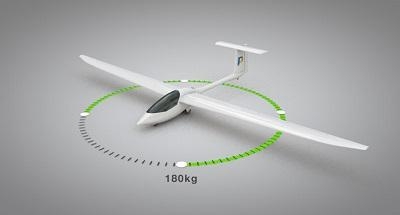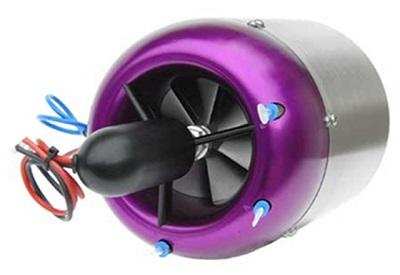Wed, Feb 18, 2015
There Have Been Various Types Of Self-Launched Gliders And ProAirsport Is Breaking Technological Ground With Hybrid Power
Glider flying rates high on the scale of sport flying. However, the nature of the beast is that it requires more than one person to get a glider launched into the air. To make launching a non-team effort, the answer has been a powered glider that can be self-launched and then stay aloft in powerless flight.

Now, a British company named ProAirsport is developing a self-launching system using hybrid electric and jet power. Their proposed aircraft falls into the British microlight certification standards, and how or if it will be certified for the U.S. market remains an open question.
For the most part, self-launched gliders have been propeller driven. Small jets have been used before but poor static thrust means take-off runs are impractically long and fuel consumption high. ProAirsport is seeking to take advantage of the jet engine and overcoming it shortfalls with electric powered wheels in a project they call “GloW.”

The small turbine engine is light weight with few moving parts and low vibration when compared to reciprocating engines. Turning the engine on (and off) is a simple automated procedure. A small air scoop is all that opens (and closes), the engine itself remains inside the fuselage, so in flight the turbine can be turned on and off easily with minimum effect on the glide performance. Their engine of choice is the AMT Titan producing max thrust of 88 pounds. According to ProAirsport, this engine is a tried and tested unit with a long in-service record.
An electric motor is used for ground taxiing and for added acceleration on takeoff. The high-torque brushless motor is a standard unit customized for their use profile and with a purpose built controller. The motor provides the initial pre take-off sprint, quickly accelerating the aircraft to flying speed. The short peak output for the sprint means required battery capacity is minimized reducing weight and cost.
Once again, recreational aviation is driving new technology. The website listed below provides an excellent video for more details.
(Images from ProAirsport’s website)
More News
Aero Linx: Model Aeronautical Association of Australia MAAA clubs are about fun flying, camaraderie and community. For over 75 years, the MAAA has been Australia’s largest fl>[...]
Touchdown Zone Lighting Two rows of transverse light bars located symmetrically about the runway centerline normally at 100 foot intervals. The basic system extends 3,000 feet alon>[...]
“Discovery and innovation are central to our mission at Virgin Galactic. We’re excited to build on our successful record of facilitating scientific experiments in subor>[...]
How To Get A Story On Aero-TV News/Feature Programming How do I submit a story idea or lead to Aero-TV? If you would like to submit a story idea or lead, please contact Jim Campbel>[...]
Student Pilot Reported That During Rotation, “All Of A Sudden The Back Of The Plane Kicked To The Right..." Analysis: The student pilot reported that during rotation, “>[...]
 ANN's Daily Aero-Linx (05.02.24)
ANN's Daily Aero-Linx (05.02.24) ANN's Daily Aero-Term (05.02.24): Touchdown Zone Lighting
ANN's Daily Aero-Term (05.02.24): Touchdown Zone Lighting Aero-News: Quote of the Day (05.02.24)
Aero-News: Quote of the Day (05.02.24) ANN FAQ: Contributing To Aero-TV
ANN FAQ: Contributing To Aero-TV NTSB Final Report: Cirrus Design Corp SR20
NTSB Final Report: Cirrus Design Corp SR20




